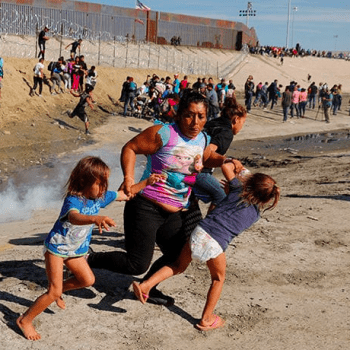One of the best pieces of writing advice I ever got was, “Write the book you needed to read but couldn’t find when you needed it.”
And that’s how The Invisible Girls came to be.
Because when I was going through cancer treatments, I read a lot of books written by women who’d had breast cancer, or had been through deep grief, but they didn’t quite resonate with me. Some were sassy and sarcastic. Others were hyper-spiritual and minimized how much loss can hurt. Others were dark and hopeless. For instance, Joan Didion’s memoir The Year of Magical Thinking is a stunningly beautiful piece of literature, but she concludes in despair, “There is no eye on the sparrow.”
I was working at Yale when I was going through treatments, and somehow when I was pursuing the dusty stacks at the main library, I found a small paperback memoir written by a woman in the 1970’s who’d had a unilateral (one-sided) mastectomy and had refused to have reconstruction because she wanted people she interacted with to have a visual clue that she was not okay. That book was the closest I came to finding something that resonated with me — but the woman’s anger was unremitting.
The book I needed to read but couldn’t find was a book that didn’t shy away from the realities of cancer — but also didn’t conclude in anger or hopeless depression (which, my therapist told me, is anger turned inward.)
I made my parents take pictures as I was going through treatments because I thought I was meant to write a book about the experience. The working title of the book was, “A Lesson in Losses,” from an essay by Nancy Mairs, an English professor with multiple sclerosis who wrote, “My life is a lesson in losses. I learn them one at a time.”
I kept a cancer journal and had my parents take pictures of the journey until my hair fell out and my cancer recurred and my oncologist looked more afraid than I felt. And then I stopped writing, because it was too emotional, too painful. The loss was just too hard.
A few years later I turned my cancer journal into a first draft and attempted to get the book published, but all the literary agents I queried wrote back and told me the same thing: the writing was good, but the story was just too sad.
And then I met a Somali refugee mom and her girls on a train one afternoon shortly after I moved to Portland, and I felt an instant connection with them because, for all our external differences, at the core we had so much in common. We’d nearly lost our lives and ended up in Portland with just the clothes on our backs and a broken heart, wondering how to start over after that.
I found out they were living in a freezing cold, empty apartment, and the mom had taken to Dumpster diving to find food for her girls. They were eating moldy bread dipped in ketchup when I showed up at their apartment the first time, because it’s all their mom had been able to find in the trash the night before.
I took them groceries, gave the mom rides to social service offices to get set up with resources to pay for food and rent, and then got my church involved. On Thanksgiving night, we descended on their apartment with all the food, clothes, toiletries and furniture they needed to not only survive, but thrive, in their new life.
Two years after I met them, I pulled my manuscript out of a box in the back of my closet, where I’d stashed it when all the literary agents told me it was just too sad, and put it in my overnight bag. I drove up to Seattle to visit the girls, where they’d moved because their mom was able to find a housekeeping job there.
I got a cheap hotel and stayed the night before driving back to Portland the following morning. After I visited with them, I returned to my hotel room. I changed into pajamas, sat in a chair next to the bed, and spent hours flipping through the manuscript, re-reading the story and re-living my cancer experience.
I thought about my life, and how it intersected with the Somali girls. I thought about how much empathy my cancer experience gave me. I thought about how cancer gave me courage — because once you face your own mortality, you can face anything. I thought about how these five vivacious, irrepressible girls loved me unconditionally, and brought me back to life.
And it was then, sitting in a small hotel room in the suburbs of Seattle, that it dawned on me. My book wasn’t going to be my story or their story; it was going to be our story. And that’s how the final version of the book came to be. When the book published, I designated 100% of the profits to go into The Invisible Girls Trust Fund so the girls can go to college.
The Invisible Girls is the book I needed to read but couldn’t find when I needed it. And maybe that’s where all good art comes from: creating what our souls need to read and hear and see and experience — but we haven’t been able to find.
The Invisible Girls is vulnerable and raw, but filled with hope.
It’s the story of love that brings you back to life.
The story of finding redemption in the most unlikely places at the most unexpected times — like when you’re taking a $2 train ride one afternoon in Portland and a Somali toddler falls asleep in your lap and changes your life.
***
To read more of the story, get your copy of The Invisible Girls at Amazon.com, Barnes&Noble.com, or wherever books are sold.












